Francisco de Goya stands as a towering figure in the annals of art history, not merely for his technical prowess but for the profound social and political commentary woven through his oeuvre. The journey through Goya’s artistic evolution offers a window into the soul of an artist grappling with the tumult of his times, reflecting on the human condition with a candour that remains strikingly relevant. This narrative seeks to shed light on how Goya’s work transcends the aesthetic to engage with the deeper currents of human experience, war, and societal transformation.
Goya’s Political and Social Commentary Through Art
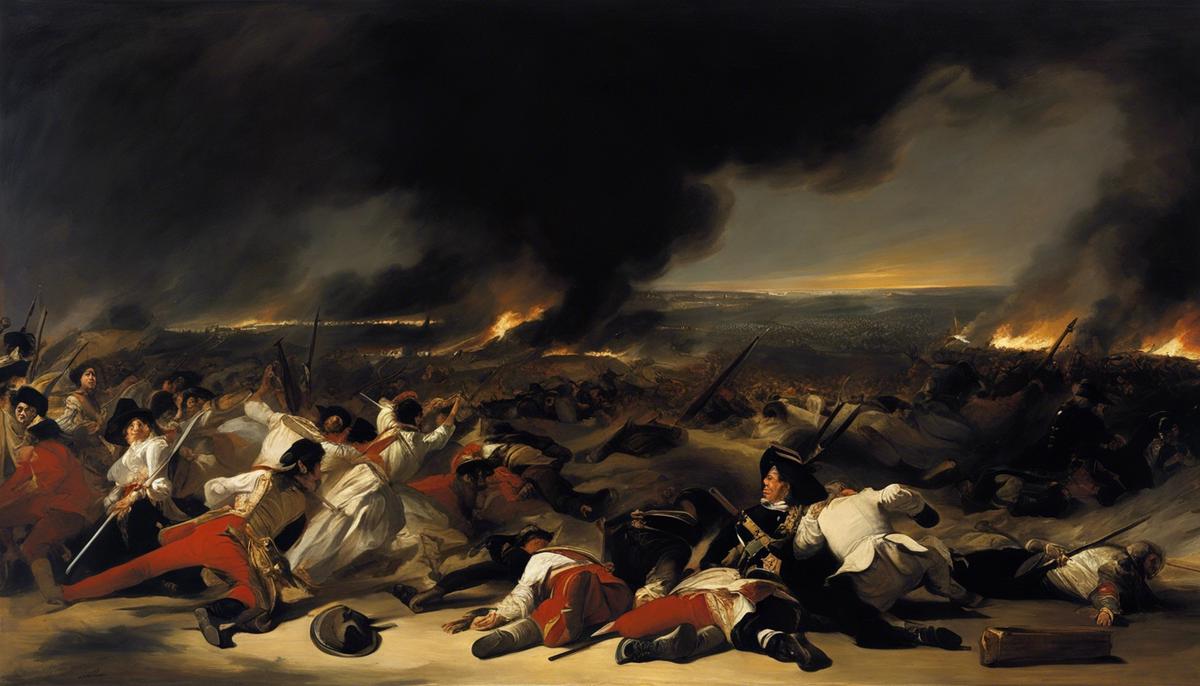
The Evolution of Goya’s Artistic Style
Goya's early works, rooted in the ornate Rococo style, were marked by traditional compositions emphasizing the grace of his aristocratic subjects. However, hints of his social observations began permeating scenes of everyday Spanish life in the tapestry cartoons he produced for the Royal Tapestry Factory.
As Goya's career progressed, a tumultuous Spanish society under siege from internal decay and external threats cast long shadows over his work. His deteriorating health, leading to eventual deafness, plunged him into a world of silent reflection where he confronted the darker aspects of human nature and societal turmoil.1 This shift is starkly represented in his etchings, particularly the 'Los Caprichos' series. Goya's venture into etching and later lithography unlocked new potentials in his artistry, allowing for a stark dynamism that emboldened his commentary on war, societal follies, and human suffering.
Goya's encounter with the French invasion and the Peninsular War thrust him into the nadir of human cruelty. The raw brutality and suffering he witnessed transformed his art into vehement protest and candid portrayals of war's ghastliness. His 'Disasters of War' series showcases the grim realities far removed from the glorified depictions of battle popular until then.2 Goya's style became synonymous with unembellished truth, a mirror held up to a society crumbling under the weight of its sins and previously veiled horrors.
Personal tragedies steered Goya into a realm of introspection and commentary on mortality and sanity. The 'Black Paintings,' murals on the walls of his home, Quinta del Sordo (House of the Deaf Man), span from allegorical contemplations to intimate reflections on madness, fear, and despair. Goya's transition from oils to murals painted directly onto walls marks his ultimate deviation from earlier influences, immersing completely into an unguarded exploration of the human condition.
As history churned outside his window, technological advancements in printmaking provided a medium ripe for Goya's evolving message. New techniques broadened the scope through which he could disseminate his visual critique. The advent of lithography afforded him greater flexibility in tones and detail, enabling a more nuanced expression of despair and disillusionment that spills over from 'Disasters of War' into his late lithographs.
Throughout these phases, from being the court's favorite painter to becoming art's poignant social critic, personal and societal disruptions coursed through Goya's life and works. Such shifts saw him abandon the celebratory tones of his early years in favor of a more jaded view of humanity—a transition that would cement his legacy as one of art's greatest truth-tellers. Goya's journey illustrates a dialogue between an artist and his era, echoing the tragedies and changes that punctuated his life through the evolution of his artistic expression.
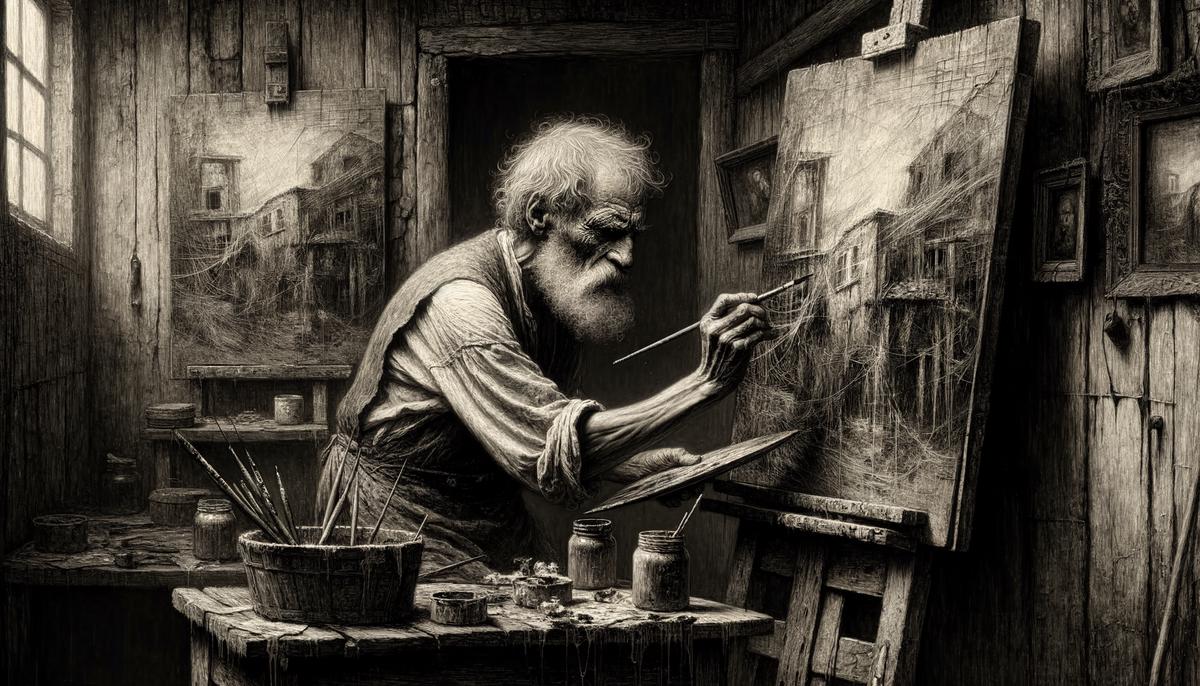
Goya’s Influence on Modern Art
Goya's emphasis on human suffering and macabre themes has resonated in the Expressionist movement, with artists like Edvard Munch acknowledging the influence of Goya's intensity in works such as "The Scream." The raw emotional power and distortion in Goya's faces echo in Munch's exploration of angst and existential dread.
Surrealists, notably Salvador Dalí, engaged with Goya's legacy, praising his ability to blend the real with the fantastical. Dalí's reinterpretations of Goya's "The Disasters of War" highlight the Surrealist fascination with dream-like landscapes inhabited by grotesque forms and nightmare creatures, inspired by Goya's unsettling juxtapositions.
Pop Art of the 20th century owes a debt to Goya's satirical eye. Artists like Andy Warhol and Roy Lichtenstein, in their iconoclastic approach to popular and mass culture, mirror Goya's critique of societal norms. The "Caprichos" series can be seen as a precursor to Pop Art's narrative-driven pieces, employing irony and parody.
Contemporary artists continue to draw upon Goya for thematic inspiration. Francis Bacon's distorted figures and existential terror echo Goya's depictions of human frailty and torment. Bacon's fascination with the body's vulnerability and the psyche's darkness owes much to Goya's uncompromising portrayal of these themes in his "Black Paintings."3
Goya's influence extends to his pioneering techniques in etching and aquatint. Many modern printmakers, including José Guadalupe Posada, have cited Goya as a key influencer in their adoption and development of printmaking techniques. The "Disasters of War" etchings remain seminal works, inspiring generations to explore the capacities of print media for conveying powerful messages.
Art installations and digital media projects have also drawn from Goya's narrative methods and thematic preoccupations. Bill Viola's video art installations, delving into human emotions and morality, reflect the psychological depth and darkness present across Goya's oeuvre, demonstrating how technology has allowed for new interpretations of Goya-inspired themes.
Goya's abiding impact is seen in the way modern education approaches art history. Institutions emphasize his work not only for its artistic significance but for its historical context—showing Goya as an artist immersed in the tumult of his times, just as many today use their work to navigate contemporary climates.
Goya's role as a resistor through art bolsters the narrative that artists can effectively counteract prevailing narratives and oppressive regimes. In politically charged art movements across the globe, from graffiti artists responding to modern-day conflicts to Resistance art during political upheavals, Goya's spirit as a dissenter who used his art to challenge power structures and societal norms inspires.
Understanding Goya's multifaceted impact on modern art requires recognition of his status as a visionary painter, pioneering printmaker, critic of societal norms, and fearless chronicler of the human condition. His expansive influence stretches across movements, mediums, and centuries, affirming his place as a titan whose legacy continually shapes contemporary creative expressions.
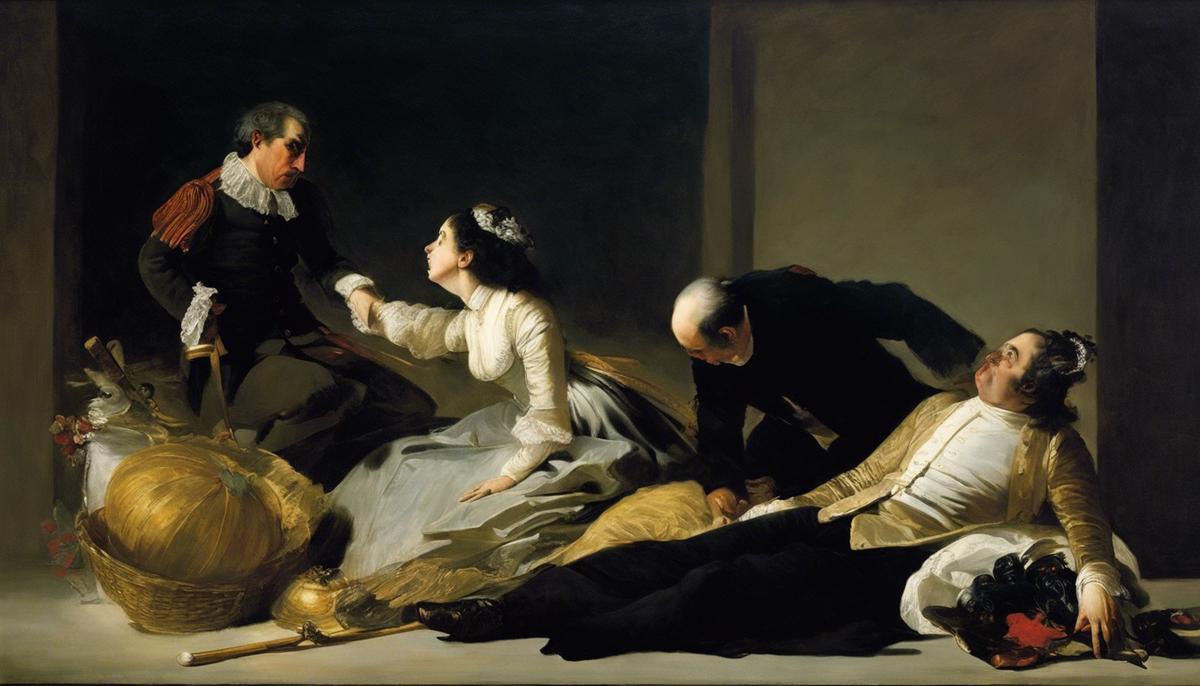
Goya’s Exploration of Human Psychology
Goya's art explores human psychology and emotions, adeptly portraying fear, madness, and the darker aspects of nature. He communicates psychological turmoil and existential dread through his innovative and expressive visual language, reflecting on the human psyche and its vulnerabilities.
"Saturn Devouring His Son" displays a raw depiction of cannibalism and madness, transcending traditional artistic norms to portray primal fear and the dark side of human nature. Part of the 'Black Paintings,' this work gives a visceral insight into Goya's perception of humanity's capacity for horror, rendering a tangible feeling of dread.
"The Sleep of Reason Produces Monsters" from the Caprichos series encapsulates Goya's insights into the interplay between reason and imagination, blending reality with nightmare. Goya suggests that the absence of rationality opens the floodgates to irrational fears and superstitions, offering a commentary on society's collective psyche.
Goya's etchings confront viewers with uncomfortable truths about human suffering and endurance. The 'Disasters of War' series plunges into the psychological impacts of violence and destruction, based on Goya's observations and possibly his own experiences.4 The haunted eyes and expressive torment captured in his subjects' faces mirror the human capacity for enduring and inflicting pain.
"The Madhouse" delves into Goya's fascination with madness, presenting the fine line between sanity and insanity. He questions what constitutes madness—a departure from rationality or society's failure to acknowledge varied forms of human consciousness.
In "Witches' Sabbath," Goya explores the irrationality of human fear, delving into the psychology of superstition and how it reflects societal fears. His portrayal of the grotesque intensifies the dive into the human psyche, illustrating the physical and psychological terror that superstitions can inflict.
Goya renders emotions vividly, representing the continuum of human experiences, from brighter highs to desolate lows. His ability to weave complex emotional narratives through his mastery over shadow, light, and expressive line work demonstrates an intimate understanding of human vulnerability, strength, despair, and resilience.
Goya's work is an open discourse on the human condition. Each piece serves as a dark mirror held up to society, capturing the essence of being human—the fears, irrationalities, despair, and the enduring spirit. Through his eerie silence and profound expressions of torment, Goya eloquently speaks across centuries, remaining relevant as a connoisseur of human emotional and psychological landscapes.
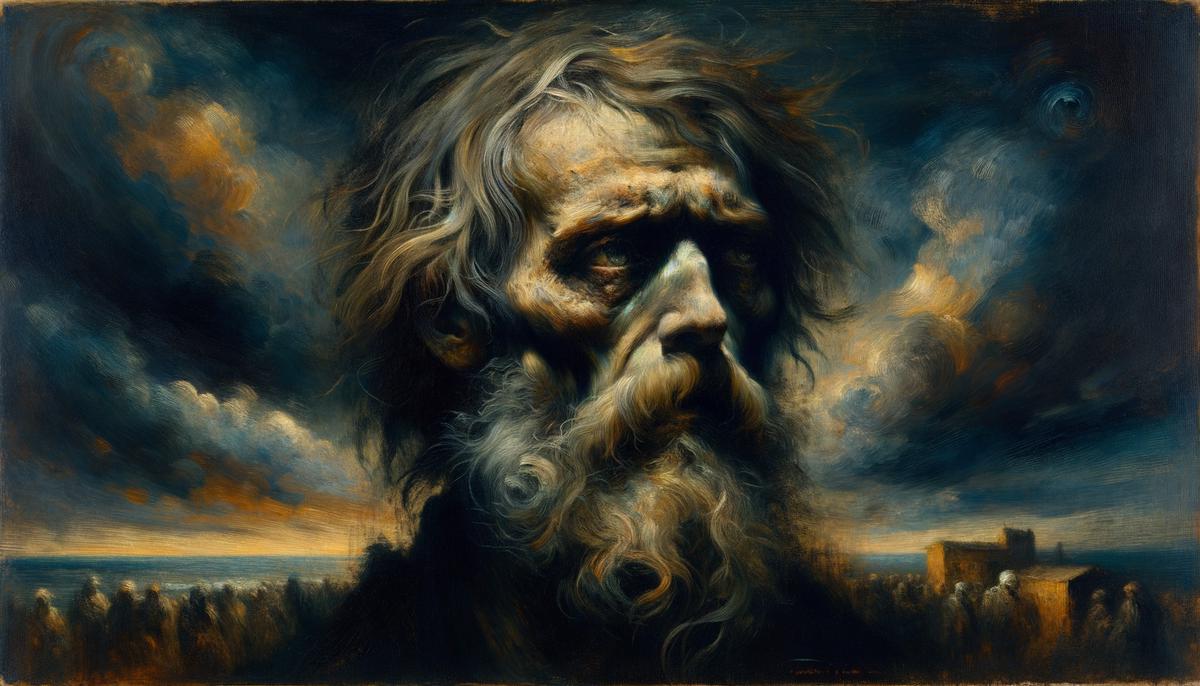
The Role of War in Shaping Goya’s Art
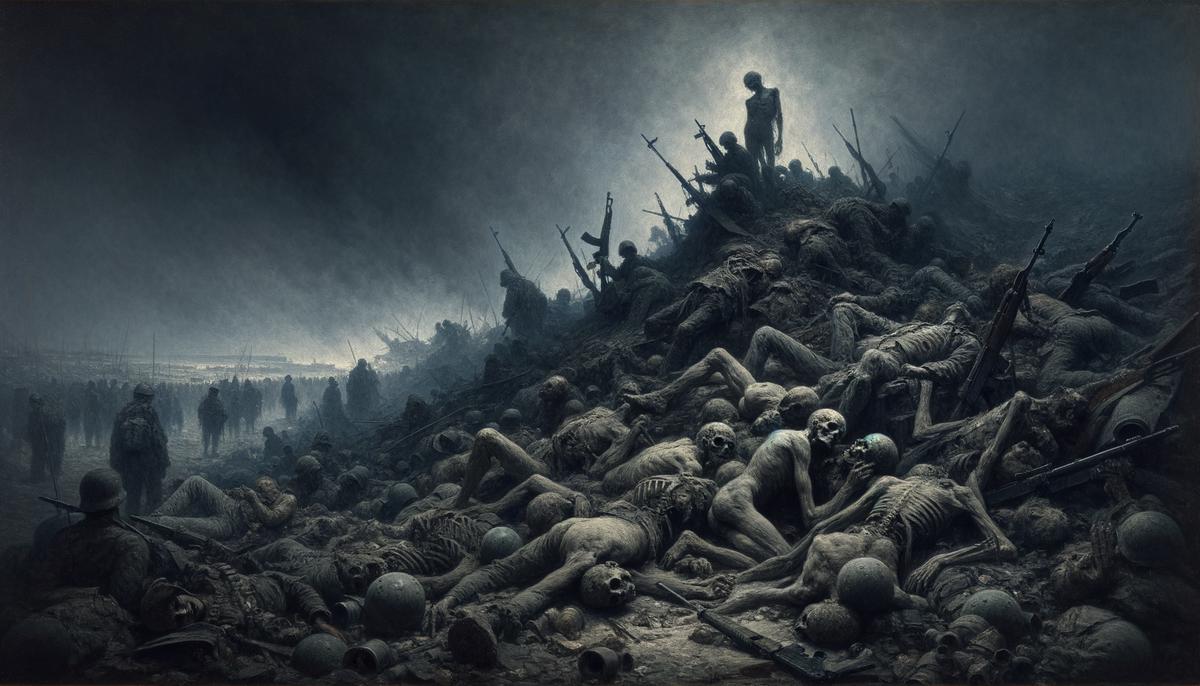
Goya’s Depiction of Women and Social Hierarchies
Goya's depictions of women reveal a complex perspective that occupies a nuanced space between critique and reinforcement of contemporary views on gender. In his royal and courtly portraits, women are clothed in the riches of their status, radiating elegance and decorum. "The Duchess of Alba" exhibits a fusion of personal individuality with societal expectations, as the Duchess stands assertively, her gaze suggesting an underlying strength that transcends her role as a figure of beauty and wealth.
In Goya's 'Caprichos', women become powerful storytellers of societal flaws and human follies. Etchings such as "Witches Sabbath" or "Celestina" depict women with autonomy and agency, suggesting a critical observation of how society vilifies or marginalizes women who possess or seek power outside norms.
Goya's position on women highlights his critical stance on societal hierarchies and conventions that relegate individuals into fixed roles. The tapestry cartoons intended for the royal family elevate the status of women through acts of care or labor, positioning them as central figures in narratives that celebrate mundane yet fundamentally human activities.
The "Majas" series daringly subverts societal norms by presenting women in a manner that challenged traditional notions of femininity and propriety. "The Nude Maja" and "The Clothed Maja" become radical assertions of female sexual autonomy, provoking thought on voyeurism and the objectification of female bodies while reflecting on the dual standards applied to female sexuality.5
Goya's illumination of social hierarchies extends beyond surface-level stratification to probe implicit power dynamics and inequalities. His portraiture of women across different social strata serves as a microcosm of wider societal tensions, embodying the shifts, struggles, and nuances of his time.
Goya's work evinces a deep compassion for the human condition, showcased in his depictions of women from the lower classes. Figures like "La Maja Vestida" embody a sense of realism that connects viewers with the lived experiences of those on society's margins, offering a counter-narrative to idealized versions of womanhood.
Goya's artistic narrative on women and social hierarchies is one of complexity and contradiction. His work oscillates between reinforcing and dismantling contemporary views on gender and class, serving as a mirror to the multifaceted and often contradictory nature of human society. Goya's depictions invite viewers into a dialogue on power, identity, and societal norms, ensuring his legacy as a provocateur who utilized his art to reflect and question the world around him.

Goya's legacy is profoundly rooted in his unflinching portrayal of the human saga. His ability to capture the essence of humanity's triumphs and tribulations, with raw honesty that eschews embellishment, ensures his place among artists whose works resonate across generations. Through his art, Goya invites us to reflect on our own times with a critical eye, reminding us that the canvas of history is painted with the strokes of human experience, in all its darkness and light.
- Hughes R. Goya. Knopf; 2003.
- Licht F. Goya: The Origins of the Modern Temper in Art. Universe Books; 1983.
- Leiris M. Francis Bacon: Full Face and in Profile. Rizzoli; 1983.
- Todorov T. Goya: À l'ombre des Lumières. Flammarion; 2011.
- Tomlinson JA. Goya: Images of Women. National Gallery of Art; 2002.






















